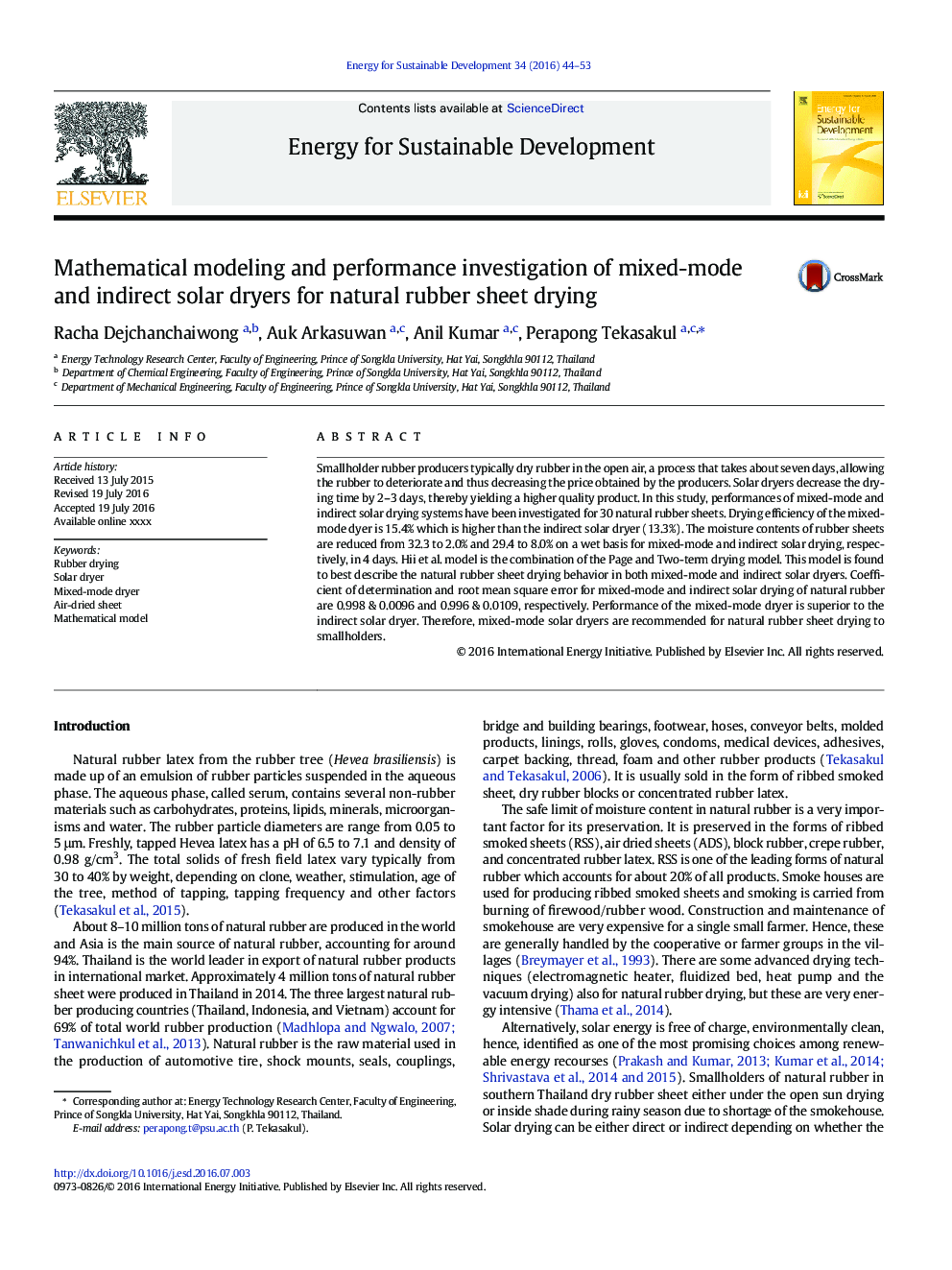| Article ID | Journal | Published Year | Pages | File Type |
|---|---|---|---|---|
| 7453728 | Energy for Sustainable Development | 2016 | 10 Pages |
Abstract
Smallholder rubber producers typically dry rubber in the open air, a process that takes about seven days, allowing the rubber to deteriorate and thus decreasing the price obtained by the producers. Solar dryers decrease the drying time by 2-3Â days, thereby yielding a higher quality product. In this study, performances of mixed-mode and indirect solar drying systems have been investigated for 30 natural rubber sheets. Drying efficiency of the mixed-mode dyer is 15.4% which is higher than the indirect solar dryer (13.3%). The moisture contents of rubber sheets are reduced from 32.3 to 2.0% and 29.4 to 8.0% on a wet basis for mixed-mode and indirect solar drying, respectively, in 4Â days. Hii et al. model is the combination of the Page and Two-term drying model. This model is found to best describe the natural rubber sheet drying behavior in both mixed-mode and indirect solar dryers. Coefficient of determination and root mean square error for mixed-mode and indirect solar drying of natural rubber are 0.998 & 0.0096 and 0.996 & 0.0109, respectively. Performance of the mixed-mode dryer is superior to the indirect solar dryer. Therefore, mixed-mode solar dryers are recommended for natural rubber sheet drying to smallholders.
Keywords
Related Topics
Physical Sciences and Engineering
Energy
Energy (General)
Authors
Racha Dejchanchaiwong, Auk Arkasuwan, Anil Kumar, Perapong Tekasakul,
